In Norway, wood burners are a common sight in houses, apartments and cabins. Here’s what you need to know about this important heating source.
If you’ve ever been to Norway, you may have noticed how widespread chimneys are, even in large cities like Oslo. On a cold winter’s day, you will see smoke rising from many of them.
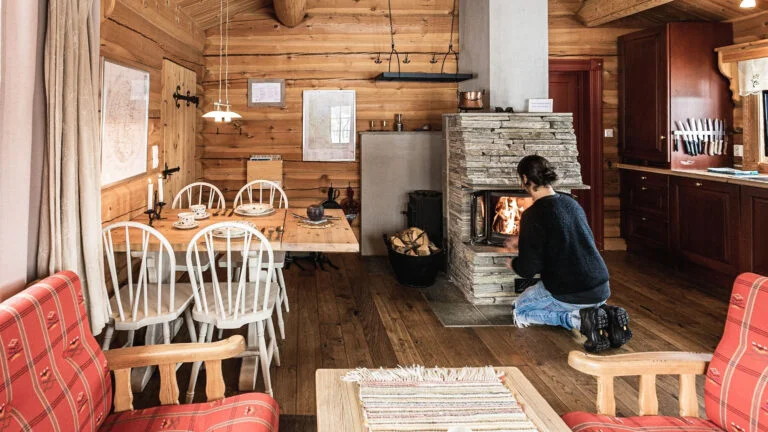
Heating with wood is common in most northern regions of the world. But wood burners in apartment buildings, which are very common in Norway, are almost unheard of in many large American cities.
In New York city, for example, the installation of new fireplaces and wood burning stoves was completely banned a few years ago. In many other cities, heating with wood is not banned but will increase the cost of your house insurance premiums.
So why are wood burning stoves still so popular in Norway? Let us dive in and explore the many reasons which make this heat source a viable option in the country.
Tradition of wood burning stoves in Norway
Let’s get the obvious reason out of the way right from the start. There is a tradition for heating with wood in Norway because for centuries, that was really the only option.
Sure, you could burn other fuels – turf and cow dung are known to have been used historically – but wood has always been the fuel of choice through the ages.
A solution for Norway’s climate
Heating may merely improve comfort further south, but in places like Norway, it is a life necessity. Drying, cutting and stacking a woodpile has always been one of the many tasks that needed doing before winter set in.
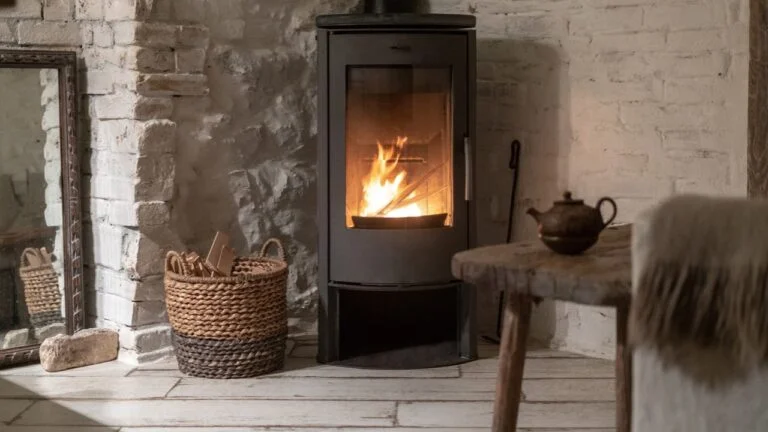
Most larger cities in Norway are located at sea level, which helps keep winter temperatures mild (relatively speaking). Places that are further inland, like Røros and Kautokeino, are more likely to experience periods of extreme cold.
Koselig
The very Scandinavian concept of kos comes into play when explaining the popularity of heating with wood. A crackling fireplace is a cosy thing indeed, and may be just the right antidote for a long, dark winter.
Some research has shown that orange light, such as the one emitted by fireplaces, has a calming, sleep-promoting effect. This can really come in handy in the evening during the dark season, when the body’s circadian rhythm is confused by the lack of daylight.
A backup solution for heating
Don’t put all your eggs in the same basket, as the saying goes. When it comes to heating, that means don’t rely exclusively on one source of heating like electricity or a district heating system.
If you rely on electric heating and the power goes out for more than a couple of hours when the temperature is below -15°C (5°F), you’re in trouble. Many residents of Quebec were glad they had other options than electricity during the great ice storm of 1998, when the power went out for weeks on end in the middle of winter.
Several of the deaths that did occur were due to people not being able to keep warm. Others were due to people trying to keep warm by burning fuel without a proper way to evacuate toxic gases.

In that sense, the prevalence of wood heating in Norway means that the country is better prepared to face a similar disaster.
The looming threat of high electricity prices
Electricity prices in Norway go up and down according to demand, and have been doing so for a number of years. While electricity prices have historically been quite low in the country due to an abundance of hydropower, many still remember the winter of 2003.
That year, a mid-winter electricity price spike made it very advantageous to burn wood for heating. In many people’s minds, that winter underlined the importance of having more than one option for heating.
In December of 2021, a new electricity price spike had the same effect. The spike has since been made even worse by the war in Ukraine and its effect on the European energy market.
Benefits for Norway’s energy system
Since many people tend to use their wood burning stoves on the very coldest days, it can be argued that heating with wood benefits the country’s energy system.
By reducing the strain on the grid on the days where electricity consumption is at its highest, wood burning stoves help make the energy system as a whole more robust.
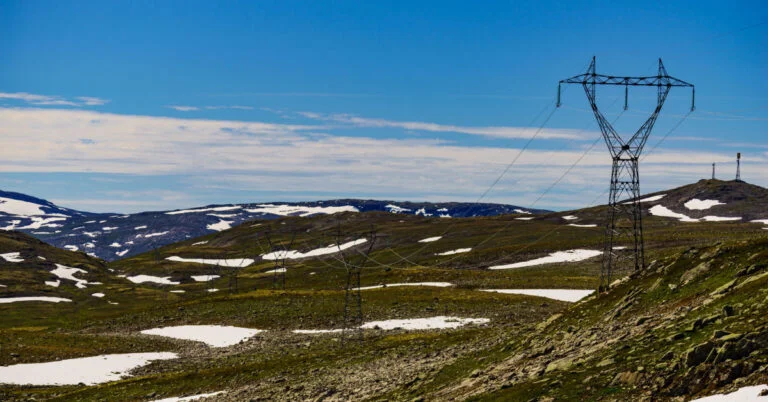
At warmer latitude, the same energy-system-supporting effect can be attained with solar panels. Peaks in consumption in warm countries often happen on the very hottest days, because of air conditioning.
This means that the peaks will coincide with the peaks in production by solar panels. In Norway, short winter days mean that solar panels will be at their minimum levels of production during the mid-winter consumption peaks.
The downsides of wood burning stoves
The coin has two sides of course, and heating with wood does have disadvantages. The obvious one is that it creates smoke.
Smog conditions
In an urban environment where many people may fire up their stoves on a cold day, this can mean smog-like conditions. Since fjord cities like Oslo and Trondheim are next to Gulf stream heated waters, the smog effect can be compounded on cold days by an effect called “temperature inversion”.
Essentially, this effect acts as a kind of atmospheric “lid” preventing the air from circulating, and worsening the smog.
This problem can be mitigated in several ways. Not using the fireplace or wood stove during a temperature inversion days is one, but since those days are often the coldest ones, this solution is not always ideal.
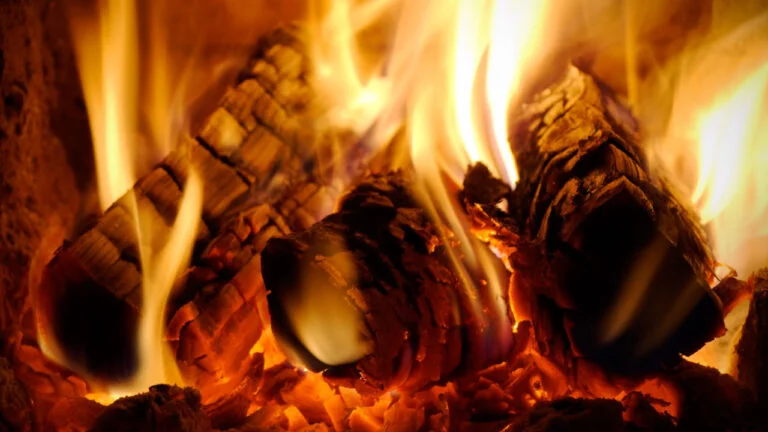
Another solution is to make sure the stove is modern, and that it is used according to its manufacturer’s instructions. Recent wood burning stoves combust the wood and gases much more efficiently, which results in fewer harmful emissions.
As a bonus, modern stoves are also more efficient. This means that they generate more heat from the same amount of wood.
Indoor air quality
When heating with wood, some smoke or gases can get into your house or apartment. This is particularly true in apartment buildings where many units share the same chimney.
To avoid this, make sure you use the stove properly, particularly with regards to regulating the air intake. Ensure that there is no “negative pressure” in the house caused by air being pumped out (by a bathroom or kitchen fan, for example).
Also, when opening the stove door, do it slowly, so as not to create a vortex that sucks harmful gases out.
Climate emissions
Burning anything creates emissions, notably of CO2, but also of other more potent greenhouse gases such as methane and nitrous oxide. Again, a modern stove, used properly, will have lower emissions.
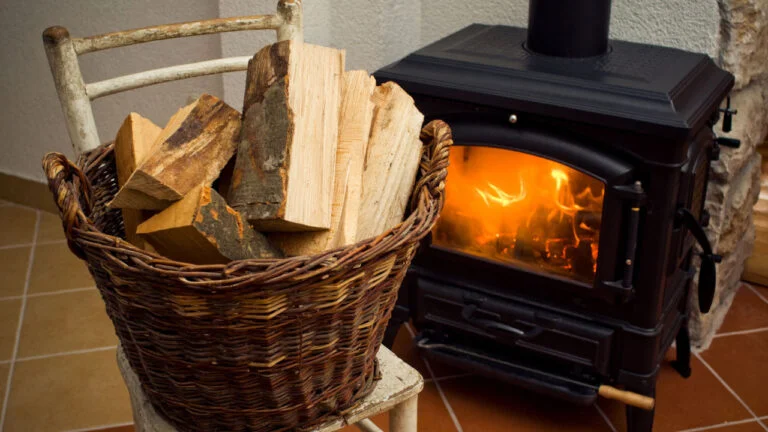
Another factor to consider is that wood is a biofuel, meaning that the carbon it contains is part of an ongoing cycle and was already in the atmosphere before it was captured by a tree. This is in opposition to carbon from fossil fuels, which was sequestered underground and is effectively added to the atmosphere when burned.
That being said, there is no getting around the fact that heating with wood generates more greenhouse gases than heating with renewable electricity. For this reason, heating with wood is probably best saved for the very coldest days.
Because those days are also typically the ones when the electricity price is at its highest in Norway, that is when wood stove users will get the most bang for their logs, so to speak.
On a normal day, when there is just a slight chill in the air, stick to conventional electric heating or even better, a heat pump.
Do you use a wood burner in Norway? Let us know your thoughts and experiences in the comments.


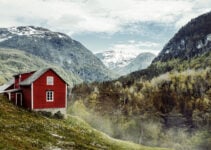
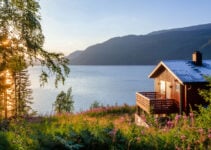

Scandanavians are better organised for cold weather and always have been.
The scandalous ‘rip off’ cost of energy in the UK will lead to people burning their furniture this Winter in those houses still having a fireplace despite smokeless zone regulations. The cost of kiln dried wood has gone through the ceiling as greedy suppliers take an obscene profit. It is agreed that open fires en masse cause smog BUT the UK Nanny State government has to temporarily allow burning of open fires as they suddenly allow coal fired power stations to come back on stream due to the energy crisis.
Hello politicians and ‘Greens’ sitting in your ivory towers, we are on a War footing and adjustments to smokeless zones has to be made or people will die from exposure.
Already the threat of power cuts this Winter are on the cards.
North Sea Gas? In the 70’s we were promised cheap domestic gas for at least 100 years. What happened? The gas went up the chimney by being used to power massive gas turbines to generate 40% of electricity!
Successive governments have been influenced by the non nuclear power brigade and we are certainly paying for that mistake today.
You couldn’t make it up!
In my humble oppinion
The coal mines should be reopend. And the coal used to produce gas.
And the remaining coke (carbon) buried in old mines. This would yield low carbon energy.
People should wear warm clothes indoors instead of swanning around in shorts and flip flops with the heating turned to 80deg
Having grown up using wood heat, it warms you two ways. When your cutting and stacking it then when you’re burning it for heat.
I use a wood stove in Oregon (USA). Nothing beats its heat!
I live in a small bungalow by the sea. I’m not on mains gas, I do have LPG heating. I also have a newish multi fuel stove. I try not to use my heating too much, because of the cost, figure on around £60 a week! I normally burn logs, this used to cost around £200 for the entire winter..due to demand that has doubled this year. But is still way cheeper than LPG… I also bought in some stove nuts… Smokeless coal this year….. Just to be sure I have the fuel to keep me warm……
I live almost 50/50 in Uk and Norway and I have seen a definite change in the ordinary people’s attitude over the last year. Many people I speak to in Norway are very sceptical about the future use of electrical vehicles and wind power reflecting exactly the ordinary people’s views in Scotland. Maybe the Green parties need to go out and gather the opinions of the folk who are really suffering because of the war and obvious greed of all those in the energy supply chain. It is not widely publicised but the power shortages now being faced by us all are in part being caused by our increasing reliance on wind and solar energy. As we Nothern Europeans are well aware the wind doesn’t always blow on the coldest days and nor does the sun always shine. If the enviromentalists keep pushing harder and harder there will be an enormous backlash from the ever suffering ordinary voter. Look out the window of your comfortable middle class homes occasionally
I live almost 50/50 in Uk and Norway and I have seen a definite change in the ordinary people’s attitude over the last year. Many people I speak to in Norway are very sceptical about the future use of electrical vehicles and wind power reflecting exactly the ordinary people’s views in Scotland. Maybe the Green parties need to go out and gather the opinions of the folk who are really suffering because of the war and obvious greed of all those in the energy supply chain. It is not widely publicised but the power shortages now being faced by us all are in part being caused by our increasing reliance on wind and solar energy. As we Nothern Europeans are well aware the wind doesn’t always blow on the coldest days and nor does the sun always shine. If the enviromentalists keep pushing harder and harder there will be an enormous backlash from the ever suffering ordinary voter. Look out the window of your comfortable homes occasionally
Just remove the bits that don’t pass your censorship and post it for me.
Jeff.
LOL
“New wood burning stoves billed as more environmentally friendly still emit 750 times more tiny particle pollution than a modern HGV truck, a report has shown. […] Wood burners also triple the level of harmful pollution inside homes and should be sold with a health warning, said the scientist behind a study published in December. The researchers advised that the stoves should not be used around elderly people or children.”
https://www.theguardian.com/environment/2021/oct/09/eco-wood-stoves-emit-pollution-hgv-ecodesign